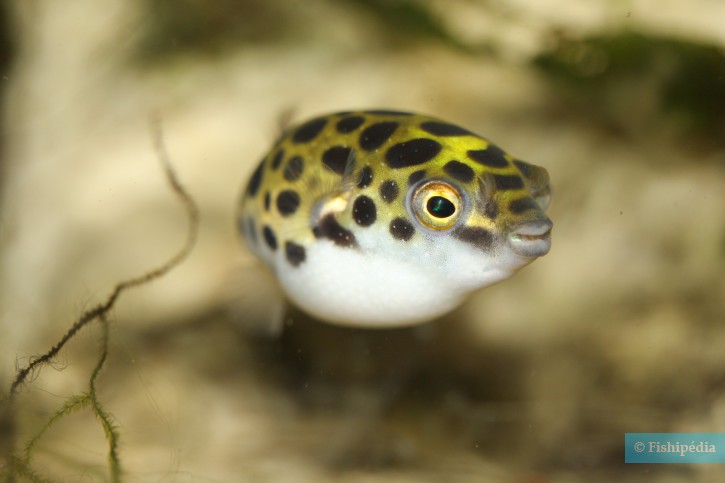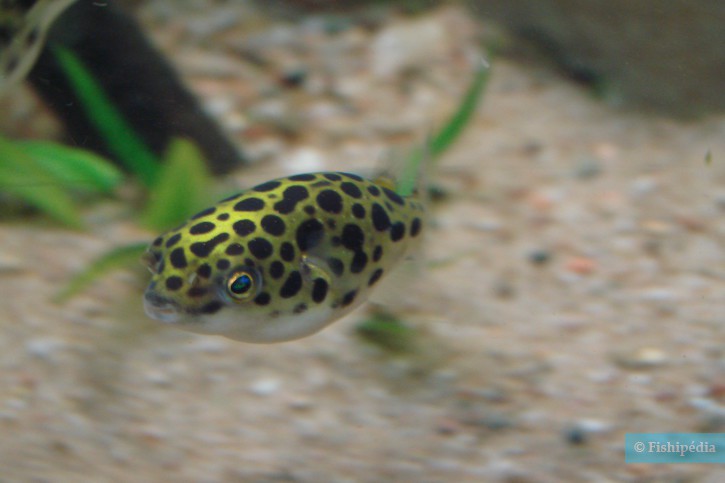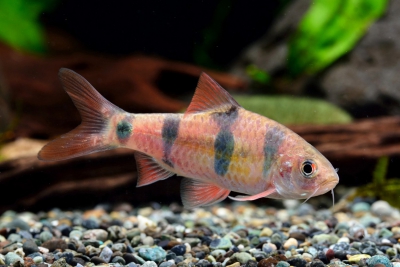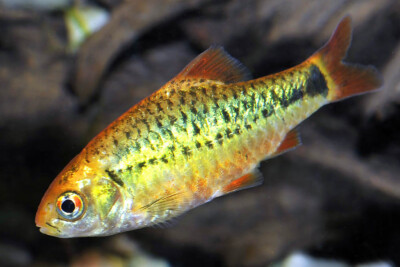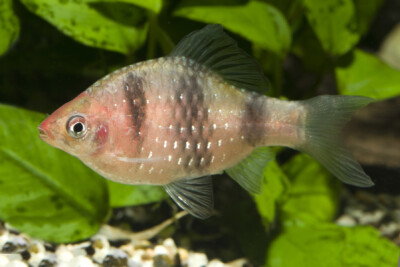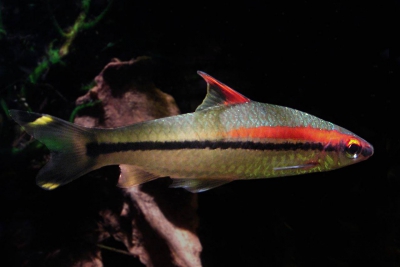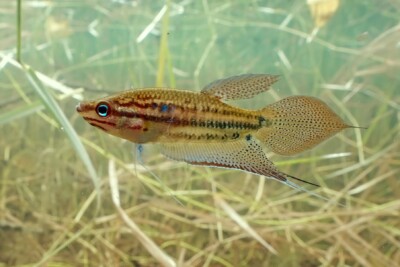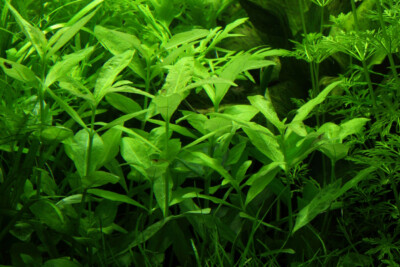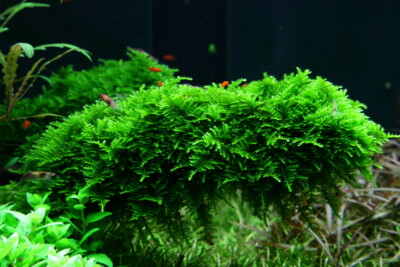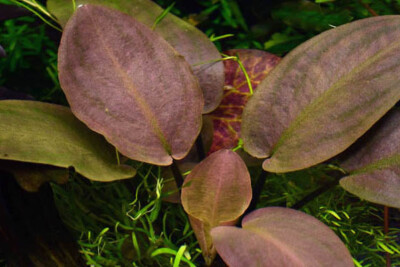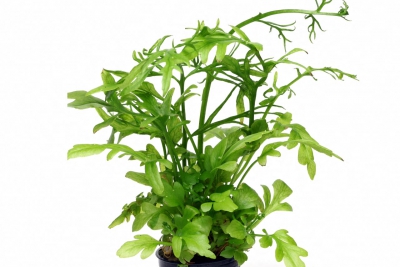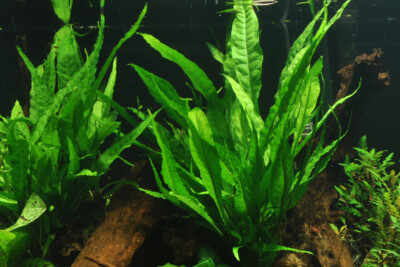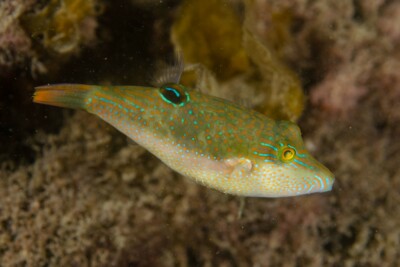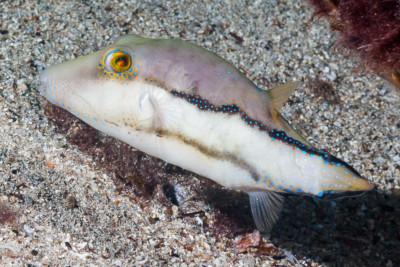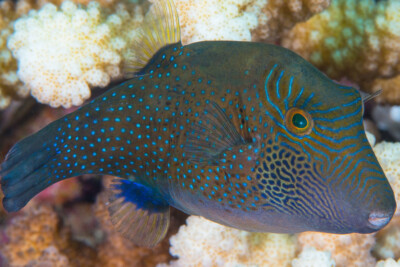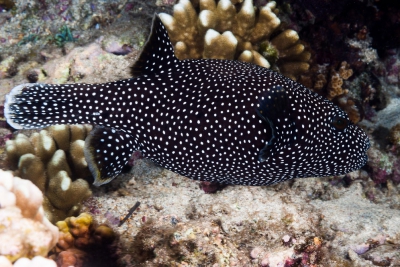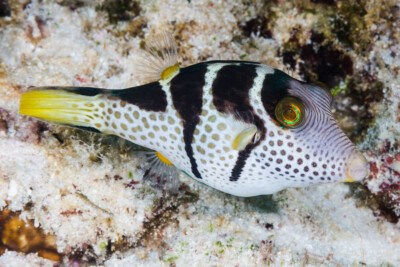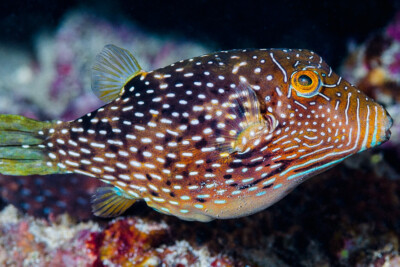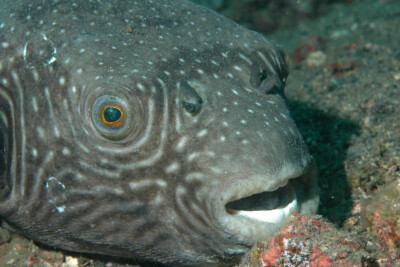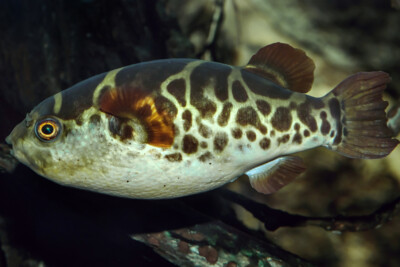Dichotomyctere nigroviridis
| Scientific name | Dichotomyctere nigroviridis |
|---|---|
| Descriptor | Marion de Procé |
| Year of description | 1822 |
| IUCN category (World) | LC |
| Family | Tetraodontidae |
| Genus | Dichotomyctere |
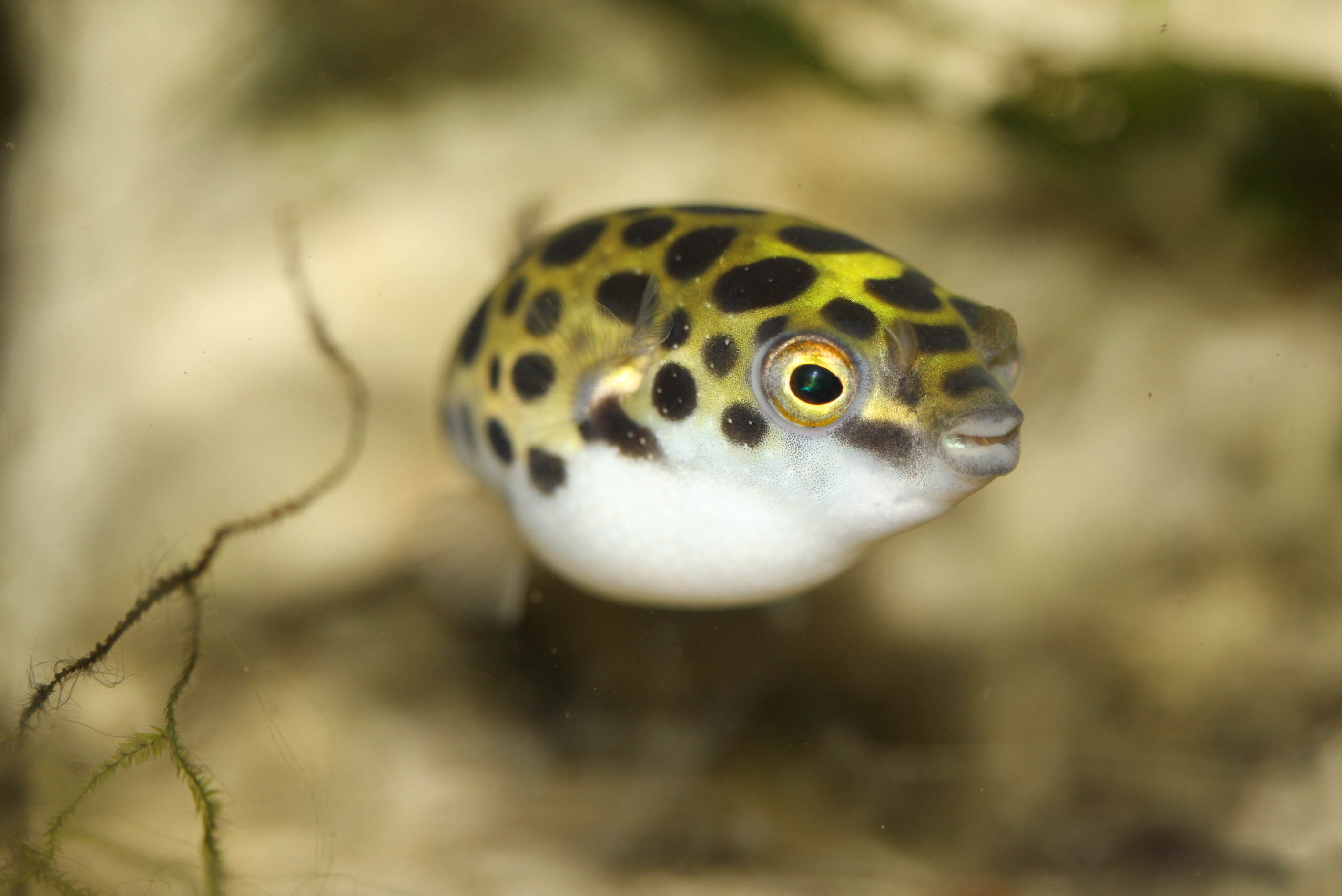

Introduction
Dichotomyctere nigroviridis is a brackish water fish from the Asia.
This sheet is currently being prepared. The texts currently proposed come from our data model or are being drafted. To request priority for this content, you can write to us HERE.
Who is it?
Morphology
-
Average size14 cm
-
Maximum size17 cm
-
Longevity10 year
-
Patternponctuations
-
Average size14 cm
-
Maximum size17 cm
-
Longevity10 year
-
Patternponctuations
How to recognize This fish ?
This species belongs to the group of pufferfish. These fish are nicknamed like this because they have the ability to inflate themselves when they feel threatened.
To achieve this inflation, they swallow water and fill their stomach to more than double their volume. This is made possible by their stretchy skin. This subterfuge makes them look much more impressive to their predators. They are also much more complicated to swallow. This change in shape becomes a disadvantage for these fish that, once inflated, can hardly move.
Dichotomyctere nigroviridis measures between 14 and 17 cm. This fish is bicolore with a predominantly vert, noir and blanc body. The also has noir ponctuations.
Behaviour & Life cycle
-
dietcarnivorous
-
Sociabilitysolitary
-
territorialNo
-
Way of livingdiurnal
Tetrodotoxin or TTX is a neurotoxin produced by bacteria. In this species, it is present in large quantities in the liver, viscera and gonads but is also found in the skin.
Females are more toxic than males, this is due to the high concentration of TTX in the ovaries.
When poisoned, TTX is fatal in more than 50% of cases. This neurotoxin acts on the pores of the sodium channels, which stops the passage of nerve impulses, resulting in partial or total paralysis. Death is most often due to respiratory paralysis triggering cardiac arrest by collapse.
Dichotomyctere nigroviridis is a fish solitary naturally found at mid-depth and near the bottom. This species is carnivorous .
Although Dichotomyctere nigroviridis is non-territorial, it is sometimes aggressive towards other species. It also shows signs of aggression towards its conspecifics.
Reproduction
-
Reproductionovipare qui pond sur substrat découvert
Dichotomyctere nigroviridis is a fish ovipare qui pond sur substrat découvert.
Harmless species
This species does not represent any particular threats to humans when encountered in its natural environment.
Origin and distribution
What is its habitat?
Natural environment characteristics
-
Temperature24 - 28 °C
-
pH (acidity)7.8 - 8.2
-
gh (hardness)9 - 19
-
FlowSlow
Biotope presentation
Dichotomyctere nigroviridis is found in rivers, marshes and seaside creeks. With the influence of the tides, the water changes constantly in salinity.
Main recommendations for fishkeeping
Deontology
In order to preserve wildlife, if you acquire this animal, it must not be released into the wild. See also, the Fishipedia charter.
Fishipedia supports the practice of responsible and environmentally friendly aquarium keeping. We encourage maintenance if it is motivated by a desire to understand the biological functioning of living things and if it is done with respect for animal life.
We believe that aquaristics is an opening to the discovery of aquatic environments, especially freshwater, and that this knowledge is necessary to better protect and respect these environments. Logically, we refute the compulsive purchase of animals that would not find a sufficient and / or adapted place in the host aquarium.
Our recommendationsThese tips apply to adult species from breeding. With regards to water conditions, wild species or close relatives must be kept under the same conditions as in their area of origin.
-
Min volume160 liters
-
Population minnot specified
-
Temperature24 - 28 °C
-
pH (acidity)7.2 - 8
CharacteristicsThe characteristics below apply for adult species. They correspond to an average of cases, validated in maintenance condition.
-
Difficulty breedingThe farming difficulty is relative. It depends on experiments already carried out with similar species. First, it takes into consideration the robustness of the species, the ease of recreation of a favorable environment and the general behaviour with the other inhabitants of the aquarium.easy
-
Robustnessrobust
-
Behaviourslightly aggressive
-
Availabilitystandard
General reminders
It is strongly advised to read the complete dedicated file and to get information on the feedbacks of maintenance of the envisaged animal, this to avoid any potential conflict whose end result is generally the death of the individual (or the other inhabitants). It is important not to overload your aquarium to limit pollution. This will make maintenance easier.
In nature, animals are subject to weather conditions and live in waters with variable characteristics. The recommendations offered by our team for aquarium maintenance are a guidance and cannot be assimilated to scientific datas.
General reminder on maintenance datas
Le démarrage d'un aquarium est une partie primordiale pour l'équilibre et le bien-être des poissons. Lorsque l'on met en eau un aquarium, l'eau passe naturellement par un cycle biologique : le cycle de l'azote. Celui-ci dure environ trois semaines. Tous les 2 jours, nous vous conseillons de tester votre eau jusqu'à ce que le taux de nitrite soit à zéro pendant plusieurs jours d'affilée.
Pour accélérer ce cycle, vous pouvez utiliser un activateur de bactéries comme JBL Denitrol. Cette solution riche en bactéries vivantes et enzymes permet une mise en place rapide du cycle de l'azote. Les poissons peuvent alors être introduits plus rapidement.
Il est important de tester l'eau de son aquarium régulièrement pour maintenir un environnement sain pour les poissons et les autres habitants. Les tests d'eau permettent de mesurer les niveaux de différents paramètres tels que le pH, la dureté totale, ainsi que les taux de nitrates, de nitrites et d'ammoniaque.
Pour réaliser ces tests, vous pouvez utiliser des produits d'analyse spécialisés tels que JBL ProScan qui permet de réaliser un diagnostic de l'eau directement via un smartphone. Il existe également des coffrets de tests plus classiques de bandelettes, comme JBL PROAQUATEST.
En cas d’usage de l’eau du robinet, vous pouvez utiliser un conditionneur d’eau de type Biotopol de JBL pour éliminer les substances nocives comme le chlore, le cuivre, le plomb et le zinc. Les conditionneurs d'eau garantissent une meilleure santé aux poissons et une meilleure croissance des plantes.
Chlorine and chloramine are dangerous for the health of animals. Used to disinfect water, these agents are present in significant quantities in tap water. We recommend using an anti-chlorine agent every time you change the water. In addition to chlorine, treatments and medicines sold for aquarium use sometimes contain dangerous heavy metals in high doses.
Specific needs for Dichotomyctere nigroviridis
Dichotomyctere nigroviridis is a species which lives naturally at a temperature between 24 °C and 28 °C. For proper maintenance, the temperature should never exceed the 31°C for long periods. Nitrate levels should remain below 50mg/L. To keep the water clean and unpolluted, plan on changing 20% to 30% of the water volume each month.
Breeding this species is accessible to any hobbyist. It is recommended to follow some basic rules and to be rigorous to achieve a good maintenance.
This species is particularly common in the aquarium trade. Animals from long-term breeding are usually acclimatized at a temperature of about 26 °C in neutral water.
Formal incompatibilities
Cohabitation & Environment
Dichotomyctere nigroviridis being {labels.demonstrative_current_species}} brackish water fish, its maintenance requires very specific water conditions.
Although the species can live part of its time in freshwater, salt intake is recommended . The species can be acclimatized in freshwater for a short period but requires continued growth with slight salinity . This fish tolerates density deviations very well. In fact, in its natural environment, this parameter fluctuates naturally depending on the intensity of the tides. nitially, a decoration made up of limestone rocks and coral sand can participate in a good water balance. . Usually, powerful filtration is required to properly stir the water.
If you opt for maintenance in an evolving tank setting, with salinity gradually increasing with the growth of the animals, it will be necessary after several years to add a skimmer . This type of maintenance is very difficult although fascinating because as close as possible to the living environment of the species concerned.
In a community aquarium context, this species should be kept in a minimum volume of 160 liters.To best reproduce the biotope of this species, you can cover the bottom of the tank with sand and put a pile of stones to form caves.
Basic water maintenance
Dichotomyctere nigroviridis naturally living in basic water, the presence of limestone rocks such as millstone or travertine will improve its environment. It is also advisable to add sand with a contribution of specific salts to stabilize the pH, to be gauged according to the hardness of the water used.Tips for feeding
Dichotomyctere nigroviridis is carnivorous.
This species does not appreciate being fed with freeze-dried food (flakes...). Some specimens will never eat this type of food.
You should not overfeed your residents to avoid polluting the water. For most species, it is better to feed a few small portions each day rather than one large meal.
Reproduction protocol
-
Maintenance difficultyvery hard
-
egg-laying protectionYes
Reproduction of this species in an aquarium is considered very hard. Ideally, it takes place at a temperature of around 26 ° C for a pH of 8 .
Hybridization risks
In general, it is advised not to mix several species of the same genus or different varieties of the same species, to avoid the risks of hybridization.
These animals might interest you
These plants might interest you
Plants play a crucial role in aquariums, both for their ability to filter water by absorbing excess nutrients and for their aesthetic contribution. They provide fish with natural hiding places, can serve as breeding sites, and generally help maintain the overall balance and optimal conditions of the aquarium. The selection presented here includes species from the same regions as the species described on this page, although they do not necessarily come from its exact natural biotope.
To go further
Sources & Contributions
Participation & Validation
The Fishipedia team and specialist contributors are committed to providing high-quality content. However, although the information comes from scientific sources or testimonials from specialists, the cards may contain inaccuracies.

Patrick Chartrer

Benoit Chartrer
Translation
Translation done with the valuable contribution of our translators, who make this information available to a wider audience. We sincerely thank them for their commitment.
Scientific partners
Tags
Species of the same family
Same genus
